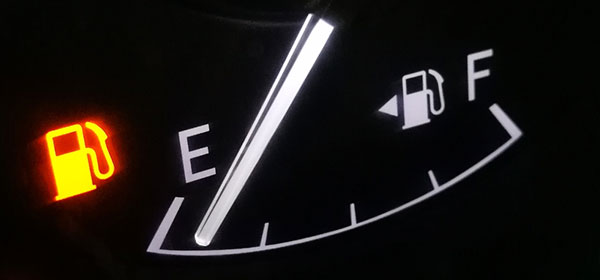With so many retirees stretching their income to the limit, it might be nice to know that you can still get around and not be stranded when your car’s fuel gauge reads empty.
I don’t know about you, but I always fret a little when I’m out and about driving my car and that fuel light comes on accompanied by the gentle yet slightly mocking sound of my empty fuel tank warning alarm.
It’s happened to me so often and, touch wood, I haven’t run out of fuel – yet – but consequently, I’ve now got a pretty good idea of how much farther I can go before my car is dead in the water … I mean ‘road’. Still doesn’t stop me from fretting, though.
Most mechanics will tell you that you should never let your fuel tank go below one-quarter full but tell that to the many retirees who run out of money before their Age Pension payment comes in. For them, a quarter of a tank is all they may have to get around each fortnight.
Now, I should point out that driving with your fuel light illuminated is not ideal. In fact, it can lead to dangerous situations, such as breaking down in a strange suburb with little or no help around, or on a freeway or toll road tunnel, where there are no stopping lanes.
You can also do damage to parts of your car if it runs out of fuel, such as fuel pumps and catalytic convertors, which could turn into costly repair jobs.
So, this should not be taken as a green light to do so. It’s merely pointing out that, when absolutely necessary, you may squeeze out a few extra kilometres from your car to do those essential tasks, or for road trippers to at least make it to the next fuel station.
Most modern cars will have what is called a ‘distance to empty’ reading on their instrument cluster or dashboard. This gives you a very rough estimate of how much further you can go without actually running out of fuel completely.
This distance is calculated on the average distance your car has travelled during normal driving conditions. So, if you are stuck in traffic when you usually drive on freeways, it won’t be so accurate, and you may run out of fuel faster. Same goes for other driving conditions, such as driving in the wet compared to dry, carrying more weight than usual, or even driving in hilly areas.
Cars without the ‘distance to empty’ gauge will still have a low fuel warning light (and sometimes a sound, too).
According to www.yourmechanic.com, depending on your make of car, you can drive an extra 48km to 183km after the warning light comes on.
The Nissan Altima has the best mileage after the warning light, travelling up to 183km, while Australia’s most popular car, the Toyota Camry, goes an additional 104km to 146km.
In fact, many of Australia’s most popular cars, such as Honda Accord, Toyota Corolla, Subaru Outback, Mazda 3, Volkswagen Jetta and Ford Escape will drive an extra 90km to 144km after the low-warning light is activated.
While it’s not exactly recommended, knowing that you can still get to the doctor’s or still pick up some shopping, even though your fuel gauge reads empty, may just come in handy one day.
Do you ever need to drive your car on empty? Or is fuel a high priority purchase for you each fortnight? If so, do you miss out on any other necessities to ensure your fuel tank is filled?
Related articles:
Ten tips for happy road trips
The must-have app for road trips
Funny fuel stop signs

